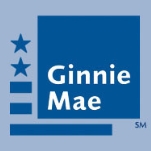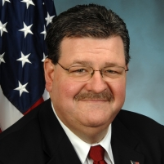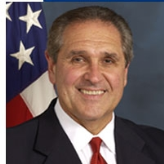An agency within the U.S. Department of Housing and Urban Development (HUD), the Government National Mortgage Association (GNMA or “Ginnie Mae”) was designed to support the government’s housing programs by creating a secondary market to buy and sell residential mortgages. Ginnie Mae provides guarantees for mortgage-backed securities (MBS), most of which are federally insured loans issued by the Federal Housing Administration and other federal housing offices. In effect, the agency buys mortgages from lending institutions and pools them into government-backed securities, which it sells to investors, guaranteeing timely repayment on both the principal and the interest.
Cause of Ginnie Mae Losses Said to Be Lax Supervision
(by Jeff Gerth, New York Times)
(PDF)
Ginnie Mae And FHA Come Out To Play
(by Maurna Desmond, Forbes)
Debated Interest Policy
What Effect Would a Privatized Ginnie Mae Have on Mortgage Costs?
(by Lew Sichelman, Realty Times)
Ginnie Mae's President Lured Back to Nebraska
(by Daniel F. Cuff, New York Times)
- Table of Contents
- Overview
- History
- What it Does
- Where Does the Money Go
- Controversies
- Suggested Reforms
- Comments
- Leave a comment


Theodore W. (Ted) Tozer, President Barack Obama’s choice to take the helm as President of the Government National Mortgage Association, also known as Ginnie Mae, was sworn in February 24, 2010. Established by Congress in 1968, Ginnie Mae was designed to support the government’s housing programs by creating a secondary market to buy and sell residential mortgages. Ginnie Mae provides guarantees for mortgage-backed securities (MBS), most of which are federally insured loans issued by the Federal Housing Administration and other federal housing offices. In effect, the agency buys mortgages from lending institutions and pools them into government-backed securities, which it sells to investors, guaranteeing repayment on both the principal and the interest. The mortgage-backed securities underlying the 2008 financial crash were issued and backed by private lenders, but since their demise, Ginnie Mae has increased its participation in backing such securities.

Joseph J. Murin earned a business degree from Chicago’s National-Louis University, after which he went to work as a loan officer for Pittsburgh National Bank (now PNC Bank). Between 1979 and 1982, he was president of Murin Brothers, Inc., a family-owned construction company. Murin was regional president of American Pioneer Savings in Orlando, Florida, chief lending officer for Standard Federal Savings and Loan, and president of Century Mortgage before joining Lender’s Service, Inc. (LSI) in 1992. Eventually he progressed to the position of LSI’s chief executive officer and remained CEO until the company was sold to Merrill Lynch in 1998. Murin moved on to Basis100, a Canadian firm that developed the Canadian Bond Trading system, again moving up to CEO. Murin then established Mortgage Settlement Network as a managing partner and sold that company on August 2007. Murin was sworn in as President of Ginnie Mae on July 1, 2008, eight months after President Bush nominated him.
- Latest News
- D.C. Public Schools will Teach all Second-Graders to Ride a Bike
- New Rule in Germany Limits Sales of Sex-Themed E-Books to 10pm to 6am
- What Happened to the 6-Year-Old Tibetan Boy the Chinese Government Kidnapped 20 Years Ago?
- U.S. Ambassador to Turkey Photoshops his Hair Color to Mock Turkish Mayor
- Mystery Artist Calls Attention to Unfixed Potholes by Drawing Penises around Them
An agency within the U.S. Department of Housing and Urban Development (HUD), the Government National Mortgage Association (GNMA or “Ginnie Mae”) was designed to support the government’s housing programs by creating a secondary market to buy and sell residential mortgages. Ginnie Mae provides guarantees for mortgage-backed securities (MBS), most of which are federally insured loans issued by the Federal Housing Administration and other federal housing offices. In effect, the agency buys mortgages from lending institutions and pools them into government-backed securities, which it sells to investors, guaranteeing timely repayment on both the principal and the interest.
Cause of Ginnie Mae Losses Said to Be Lax Supervision
(by Jeff Gerth, New York Times)
(PDF)
Ginnie Mae And FHA Come Out To Play
(by Maurna Desmond, Forbes)
Debated Interest Policy
What Effect Would a Privatized Ginnie Mae Have on Mortgage Costs?
(by Lew Sichelman, Realty Times)
Ginnie Mae's President Lured Back to Nebraska
(by Daniel F. Cuff, New York Times)
Comments


Theodore W. (Ted) Tozer, President Barack Obama’s choice to take the helm as President of the Government National Mortgage Association, also known as Ginnie Mae, was sworn in February 24, 2010. Established by Congress in 1968, Ginnie Mae was designed to support the government’s housing programs by creating a secondary market to buy and sell residential mortgages. Ginnie Mae provides guarantees for mortgage-backed securities (MBS), most of which are federally insured loans issued by the Federal Housing Administration and other federal housing offices. In effect, the agency buys mortgages from lending institutions and pools them into government-backed securities, which it sells to investors, guaranteeing repayment on both the principal and the interest. The mortgage-backed securities underlying the 2008 financial crash were issued and backed by private lenders, but since their demise, Ginnie Mae has increased its participation in backing such securities.

Joseph J. Murin earned a business degree from Chicago’s National-Louis University, after which he went to work as a loan officer for Pittsburgh National Bank (now PNC Bank). Between 1979 and 1982, he was president of Murin Brothers, Inc., a family-owned construction company. Murin was regional president of American Pioneer Savings in Orlando, Florida, chief lending officer for Standard Federal Savings and Loan, and president of Century Mortgage before joining Lender’s Service, Inc. (LSI) in 1992. Eventually he progressed to the position of LSI’s chief executive officer and remained CEO until the company was sold to Merrill Lynch in 1998. Murin moved on to Basis100, a Canadian firm that developed the Canadian Bond Trading system, again moving up to CEO. Murin then established Mortgage Settlement Network as a managing partner and sold that company on August 2007. Murin was sworn in as President of Ginnie Mae on July 1, 2008, eight months after President Bush nominated him.
- Latest News
- D.C. Public Schools will Teach all Second-Graders to Ride a Bike
- New Rule in Germany Limits Sales of Sex-Themed E-Books to 10pm to 6am
- What Happened to the 6-Year-Old Tibetan Boy the Chinese Government Kidnapped 20 Years Ago?
- U.S. Ambassador to Turkey Photoshops his Hair Color to Mock Turkish Mayor
- Mystery Artist Calls Attention to Unfixed Potholes by Drawing Penises around Them





Comments